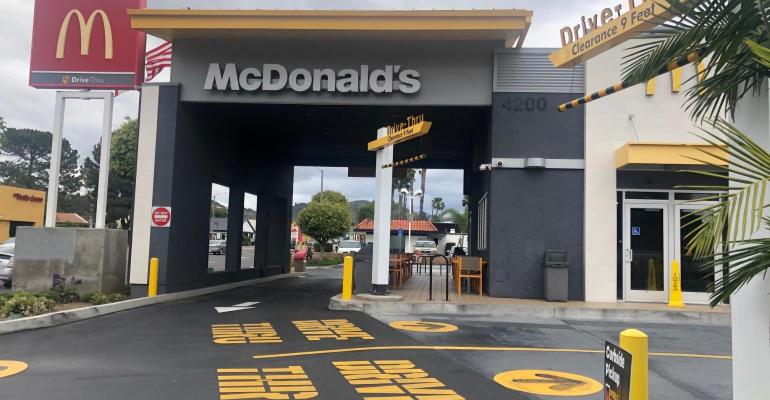McDonald’s has adopted a strong marketing playbook that has driven sales, traffic and cultural relevancy throughout the past two-plus years. Now the company is looking to beef up its operational playbook to match.
During its Q4 and full-year earnings call Tuesday morning, CEO Chris Kempczinski said the company is restarting its PACE (Performance and Customer Excellence) program, which was paused during the pandemic. In 2022, PACE was deployed to 30 markets, and Kempczinski noted the system has led to increased customer satisfaction and speed of service scores in those markets, including a 30% increase in some of France’s lowest-performing restaurants.
“Along with providing new tools, this represents a new way of working for our field teams that help us market target organizational and restaurant support for key growth drivers,” he said. “Restarting PACE led to strong operational improvements as a result of a more dedicated consulting and coaching time to support lower performing restaurants.”
No doubt the company hopes that improvement will translate to the U.S. as PACE returned to the domestic system just this month. That said, the PACE program hasn’t been without its challenges, and franchisees have expressed concern that the process will demoralize workers, as CNBC reported last year. Still, such operational metrics are more critical than ever for the chain as it continues to evolve into a multichannel business. The company’s digital sales mix was around 36% in Q4 with more runway expected as the company settles into its Accelerating the Arches 2.0 strategy. The strategy includes doubling down on the four Ds – delivery, digital, drive-thru and development.
Having more ordering channels has no doubt benefited the brand from a sales and traffic standpoint, but it’s also created more pressure for restaurant teams.
“We’ve got a lot more ordering channels coming into restaurants … and with the demand and volume that we’ve created, (that) has crated some challenges just in managing the capacity and the volume of customers in some of our restaurants,” Kempczinski said.
McDonald’s plans to invest some of its capital expenditures this year to “enabling our restaurants to be better set up to deal with the volume of business that they're handling and to make sure that they can continue to grow volume by having more capacity available as we go forward.”
We’ve yet to see what, exactly, those investments mean, but these types of changes are not new to the industry as Covid accelerated consumers’ digital habits and changed the general operating model of restaurants from mostly dine-in or drive-thru to dine-in, drive-thru, delivery, curbside, order-ahead, etc. For McDonald’s, that “four D” priority will require a sharpened focus on operations as the company reignites its development engine. The company’s capital expenditures are expected to be between $2.2 billion and $2.4 billion this year, with about half of that going to new unit openings. Globally, McDonald’s plans to open about 1,900 restaurants, with about 400 of those in the U.S. and international operated market segments. That includes 1,500 net new units, or about 4% unit growth, which is expected to contribute to nearly 1.5% systemwide sales growth. The 400-opening mark is about a 25% increase from 2022.
Notably, the company hasn’t added new units in its home market in eight years.
“2014 was the last year we actually grew restaurants in the U.S., so we’ve had eight years where we have been focused largely on a remodel program. And in that same period, our U.S. business is in a significantly better shape today than it was back then,” Kempczinski said. “We've grown the business to a great degree and what we haven't done is we haven't kept up with the new unit pace, particularly in our owned markets, U.S. and IOM.”
As it returns to unit growth, Kempczinski said the company will be more disciplined than it’s been in the past, taking a “granular look” at where to build, at what pace and with what type of restaurant.
“I think sometimes in the past, we were looking at just putting units and looking at an absolute number and not maybe looking at the quality of the site. And so we want to take some time this year to make sure we feel confident about the exact number, the pacing, the quality of the site, so that when we do roll that out, we've got the ability to continue to drive both comp sales as well as unit growth,” Kempczinski said.
“Our strong comp and brand performance has given us the right to build new units at a faster rate than we have historically.”
Contact Alicia Kelso at [email protected]





